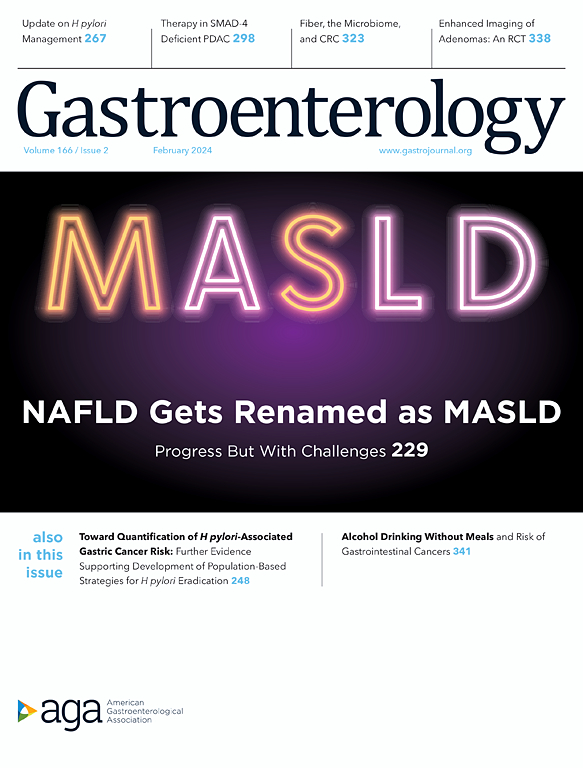Stromal Stiffness-Regulated IGF2BP2 in Pancreatic Cancer Drives Immune Evasion via Sphingomyelin Metabolism
IF 25.7
1区 医学
Q1 GASTROENTEROLOGY & HEPATOLOGY
引用次数: 0
Abstract
Background & aims
Immunotherapy has shown promising results in cancer treatment; however, it remains largely ineffective for pancreatic ductal adenocarcinoma (PDAC). N6-methyladenosine (m6A), known for its crucial role in cancer biology, is not yet fully understood regarding immune evasion. This study aims to elucidate the associations and mechanisms linking m6A modification with immune evasion in PDAC and propose strategies for clinical intervention.Methods
A multimodal PDAC cohort of 122 patients was developed, integrating transcriptomic profiling, imaging mass cytometry, and m6A quantification to identify m6A regulators associated with immunosuppressive tumor microenvironment (TME) and clinical outcomes. Findings were validated across six independent PDAC cohorts. Assays including MeRIP, RIP, and RNA pull-down confirmed that IGF2BP2 binds to targets, while scRNA-seq, flow cytometry, and mIHC profiled the TME. Preclinical interventions were tested in PDAC organoids, patient-derived tissue fragments, and humanized mouse models.Results
Our comprehensive analysis identified the m6A reader protein IGF2BP2 as a critical factor associated with poor prognosis in PDAC, linked to reduced effector cell infiltration and a fibrotic TME. High matrix stiffness in PDAC stabilized IGF2BP2, which subsequently promoted sphingomyelin synthesis via SGMS2 upregulation. This pathway facilitates PD-L1 localization on membrane lipid rafts, enhancing immune evasion. The elastographic properties of PDAC enabled noninvasive screening of patients with overexpressed IGF2BP2/SGMS2. Disrupting sphingomyelin synthesis improved antitumor immunity and suppressed PDAC growth in humanized mice, highlighting immunotherapeutic opportunities for PDAC.Conclusion
These findings emphasize the critical interplay between extrinsic matrix stiffness and intrinsic IGF2BP2-regulated sphingomyelin synthesis, identifying a promising target for immunotherapeutic strategies in PDAC.

求助全文
约1分钟内获得全文
求助全文
来源期刊

Gastroenterology
医学-胃肠肝病学
CiteScore
45.60
自引率
2.40%
发文量
4366
审稿时长
26 days
期刊介绍:
Gastroenterology is the most prominent journal in the field of gastrointestinal disease. It is the flagship journal of the American Gastroenterological Association and delivers authoritative coverage of clinical, translational, and basic studies of all aspects of the digestive system, including the liver and pancreas, as well as nutrition.
Some regular features of Gastroenterology include original research studies by leading authorities, comprehensive reviews and perspectives on important topics in adult and pediatric gastroenterology and hepatology. The journal also includes features such as editorials, correspondence, and commentaries, as well as special sections like "Mentoring, Education and Training Corner," "Diversity, Equity and Inclusion in GI," "Gastro Digest," "Gastro Curbside Consult," and "Gastro Grand Rounds."
Gastroenterology also provides digital media materials such as videos and "GI Rapid Reel" animations. It is abstracted and indexed in various databases including Scopus, Biological Abstracts, Current Contents, Embase, Nutrition Abstracts, Chemical Abstracts, Current Awareness in Biological Sciences, PubMed/Medline, and the Science Citation Index.
 求助内容:
求助内容: 应助结果提醒方式:
应助结果提醒方式:


